
 圖1 工程框圖注意本工程ad7606驅(qū)動(dòng)雖然是200Ksps采樣率一直在采集數(shù)據(jù),但由于uart的傳輸速率過(guò)低,其實(shí)并不是采集的所有數(shù)據(jù)都會(huì)通過(guò)uart傳輸給上位機(jī),本工程只能簡(jiǎn)單采集穩(wěn)定的電壓,做做電壓表可以,并不能用來(lái)采集波形數(shù)據(jù)。
圖1 工程框圖注意本工程ad7606驅(qū)動(dòng)雖然是200Ksps采樣率一直在采集數(shù)據(jù),但由于uart的傳輸速率過(guò)低,其實(shí)并不是采集的所有數(shù)據(jù)都會(huì)通過(guò)uart傳輸給上位機(jī),本工程只能簡(jiǎn)單采集穩(wěn)定的電壓,做做電壓表可以,并不能用來(lái)采集波形數(shù)據(jù)。
驅(qū)動(dòng)模塊直接查看前面即可,本文不再贅述。
02程序設(shè)計(jì) 2.1數(shù)據(jù)處理模塊
AD7606模塊輸入電壓范圍是[-5,+5],本模塊功能是將16位adc補(bǔ)碼數(shù)據(jù)轉(zhuǎn)換為電壓值,最終轉(zhuǎn)換為BCD碼,便于后續(xù)傳輸給上位機(jī)顯示。如下所示,首先把補(bǔ)碼數(shù)據(jù)轉(zhuǎn)換為15位原碼數(shù)據(jù),且保存符號(hào)位。轉(zhuǎn)換為15位數(shù)據(jù)ch_data后,對(duì)應(yīng)的模擬電壓值為[0,5V],符號(hào)位決定電壓值的正負(fù)。
always@(posedge clk or negedge rst_n)begin
r_din_vld <= {r_din_vld[0],din_vld};
end
//對(duì)應(yīng)通道數(shù)據(jù)有效時(shí),把補(bǔ)碼數(shù)據(jù)轉(zhuǎn)換為原碼且保留符號(hào)位;
always@(posedge clk or negedge rst_n)begin
if(~rst_n)begin
r_ch_data <=?'d0;
r_ch_sig <= 'd0;
end
elseif(din_vld)begin
r_ch_data <= din[15] ? (~din[14:0] +1) : din[14:0];
r_ch_sig <= din[15];
end
end
電壓值y,ad7606采集的15位數(shù)據(jù)x的轉(zhuǎn)換關(guān)系為y=x/(2^15)。因此通過(guò)下面的方式轉(zhuǎn)換,為了保留計(jì)算精度,電壓值ch_voltage為真實(shí)值的2^15*1000倍,單位mv。ch_voltage = ch_data * 1000的計(jì)算方式采用移位和加法計(jì)算。
//對(duì)應(yīng)通道數(shù)據(jù)乘以5000,得到真實(shí)電壓的2^15倍,單位mv;
always@(posedge clk)begin
if(r_din_vld[0])begin//5/32768≈0.15mv,ADC采集數(shù)據(jù)乘以0.15得電壓,0.15*2^15*1000=5000
r_ch_voltage <= {r_ch_data,12'd0} + {r_ch_data,9'd0} + {r_ch_data,8'd0} + {r_ch_data,7'd0} + {r_ch_data,3'd0};
end
end
舍棄ch_voltage的低15位數(shù)據(jù),等效除以2^15,電壓值r_voltage計(jì)算就是轉(zhuǎn)換結(jié)果,單位mv。
always@(posedge clk)begin
r_voltage<= r_din_vld[1] ? r_ch_voltage[27:15] : r_voltage;//除以2^15次方,得到mv電壓;
r_voltage_vld<= r_din_vld[1];
voltage_sig<= r_ch_sig;
end
最后通過(guò)hex2bcd模塊把轉(zhuǎn)換后的電壓值轉(zhuǎn)換為BCD碼,該模塊全部采用參數(shù)化設(shè)計(jì),前面有一篇文章也講了具體實(shí)現(xiàn)原理,有興趣的可以點(diǎn)擊查看。
//--###############################################################################################
//--#
//--# File Name : data_dispose
//--# Designer : 數(shù)字站
//--# Tool : Quartus 2018.1
//--# Design Date : 2024.10.10
//--# Description :
//--# Version : 0.0
//--# Coding scheme : UTF-8(If the Chinese comment of the file is garbled, please do not save it and check whether the file is opened in GBK encoding mode)
//--#
//--###############################################################################################
module data_dispose (
input clk ,//系統(tǒng)時(shí)鐘信號(hào);
input rst_n ,//系統(tǒng)復(fù)位信號(hào),低電平有效;
input [15:0] din ,//輸入數(shù)據(jù);
input din_vld ,//輸入數(shù)據(jù)有效指示信號(hào),高電平有效;
output [15:0] voltage ,//輸出電壓,單位mv
output reg voltage_sig ='d0 ,//輸出電壓的正負(fù),低電平表示正;
output voltage_vld //輸出數(shù)據(jù)有效指示信號(hào),高電平有效;
);
reg [1:0] r_din_vld ='d0 ;
reg [14:0] r_ch_data ;//
reg [27:0] r_ch_voltage ='d0 ;
reg r_ch_sig ='d0 ;
reg [12:0] r_voltage ='d0 ;
reg r_voltage_vld='d0 ;
always@(posedge clk or negedge rst_n)begin
r_din_vld<={r_din_vld[0],din_vld};
end
//對(duì)應(yīng)通道數(shù)據(jù)有效時(shí),把補(bǔ)碼數(shù)據(jù)轉(zhuǎn)換為原碼且保留符號(hào)位;
always@(posedge clk or negedge rst_n)begin
if(~rst_n)begin
r_ch_data<='d0;
r_ch_sig<='d0;
end
elseif(din_vld)begin
r_ch_data<=din[15]?(~din[14:0]+1) : din[14:0];
r_ch_sig<=din[15];
end
end
//對(duì)應(yīng)通道數(shù)據(jù)乘以5000,得到真實(shí)電壓的2^15倍,單位mv;
always@(posedge clk)begin
if(r_din_vld[0])begin//5/32768≈0.15mv,ADC采集數(shù)據(jù)乘以0.15得電壓,0.15*2^15*1000=5000
r_ch_voltage<={r_ch_data,12'd0}+{r_ch_data,9'd0}+{r_ch_data,8'd0}+{r_ch_data,7'd0}+{r_ch_data,3'd0};
end
end
//產(chǎn)生輸出數(shù)據(jù);
always@(posedge clk)begin
r_voltage<=r_din_vld[1]?r_ch_voltage[27:15] : r_voltage;//除以2^15次方,得到mv電壓;
r_voltage_vld<=r_din_vld[1];
voltage_sig<=r_ch_sig;
end
//調(diào)用十六進(jìn)制轉(zhuǎn)BCD模塊,將13位十六進(jìn)制數(shù)據(jù)轉(zhuǎn)換成16位BCD碼;
hex2bcd #(
.IN_DATA_W (13 )//輸入數(shù)據(jù)位寬;
)
u_hex2bcd (
.clk ( clk ),//系統(tǒng)時(shí)鐘;
.rst_n ( rst_n ),//系統(tǒng)復(fù)位,低電平有效;
.din ( r_voltage ),//輸入二進(jìn)制數(shù)據(jù);
.din_vld ( r_voltage_vld ),//輸入數(shù)據(jù)有效指示信號(hào),高電平有效;
.rdy ( ),//忙閑指示信號(hào),該信號(hào)高電平時(shí)才能輸入有效數(shù)據(jù);
.dout ( voltage ),//輸出8421BCD碼;
.dout_vld ( voltage_vld )//輸出數(shù)據(jù)有效指示信號(hào),高電平有效;
);
endmodule
2.2
uart字節(jié)發(fā)送模塊
首先通過(guò)存儲(chǔ)器保存八路adc轉(zhuǎn)換后的bcd數(shù)據(jù),保存的時(shí)候還要將數(shù)據(jù)加48轉(zhuǎn)換為ascii編碼,因?yàn)?對(duì)應(yīng)的ascii碼對(duì)應(yīng)數(shù)值為48。
always@(posedge clk)begin
if(i_voltage_vld[0])begin
r_voltage_sig[0] <= ?i_voltage_sig[0];//保存通道0的符號(hào)位;
r_voltage_g[0] <= i_voltage0[15:12] +8'd48;//將通道0的個(gè)位數(shù)據(jù)轉(zhuǎn)換為ASCII對(duì)應(yīng)字符;
r_voltage_s[0] <= i_voltage0[11:8] +8'd48;//將通道0的十分位數(shù)據(jù)轉(zhuǎn)換為ASCII對(duì)應(yīng)字符;
r_voltage_b[0] <= i_voltage0[7:4] +8'd48;//將通道0的百分位數(shù)據(jù)轉(zhuǎn)換為ASCII對(duì)應(yīng)字符;
r_voltage_q[0] <= i_voltage0[3:0] +8'd48;//將通道0的千分位數(shù)據(jù)轉(zhuǎn)換為ASCII對(duì)應(yīng)字符;
end
end
always@(posedge clk)begin
if(i_voltage_vld[1])begin
r_voltage_sig[1] <= ?i_voltage_sig[1];//保存通道1的符號(hào)位;
r_voltage_g[1] <= i_voltage1[15:12] +8'd48;//將通道1的個(gè)位數(shù)據(jù)轉(zhuǎn)換為ASCII對(duì)應(yīng)字符;
r_voltage_s[1] <= i_voltage1[11:8] +8'd48;//將通道1的十分位數(shù)據(jù)轉(zhuǎn)換為ASCII對(duì)應(yīng)字符;
r_voltage_b[1] <= i_voltage1[7:4] +8'd48;//將通道1的百分位數(shù)據(jù)轉(zhuǎn)換為ASCII對(duì)應(yīng)字符;
r_voltage_q[1] <= i_voltage1[3:0] +8'd48;//將通道1的千分位數(shù)據(jù)轉(zhuǎn)換為ASCII對(duì)應(yīng)字符;
end
end
always@(posedge clk)begin
if(i_voltage_vld[2])begin
r_voltage_sig[2] <= ?i_voltage_sig[2];//保存通道2的符號(hào)位;
r_voltage_g[2] <= i_voltage2[15:12] +8'd48;//將通道2的個(gè)位數(shù)據(jù)轉(zhuǎn)換為ASCII對(duì)應(yīng)字符;
r_voltage_s[2] <= i_voltage2[11:8] +8'd48;//將通道2的十分位數(shù)據(jù)轉(zhuǎn)換為ASCII對(duì)應(yīng)字符;
r_voltage_b[2] <= i_voltage2[7:4] +8'd48;//將通道2的百分位數(shù)據(jù)轉(zhuǎn)換為ASCII對(duì)應(yīng)字符;
r_voltage_q[2] <= i_voltage2[3:0] +8'd48;//將通道2的千分位數(shù)據(jù)轉(zhuǎn)換為ASCII對(duì)應(yīng)字符;
end
end
always@(posedge clk)begin
if(i_voltage_vld[3])begin
r_voltage_sig[3] <= ?i_voltage_sig[3];//保存通道3的符號(hào)位;
r_voltage_g[3] <= i_voltage3[15:12] +8'd48;//將通道3的個(gè)位數(shù)據(jù)轉(zhuǎn)換為ASCII對(duì)應(yīng)字符;
r_voltage_s[3] <= i_voltage3[11:8] +8'd48;//將通道3的十分位數(shù)據(jù)轉(zhuǎn)換為ASCII對(duì)應(yīng)字符;
r_voltage_b[3] <= i_voltage3[7:4] +8'd48;//將通道3的百分位數(shù)據(jù)轉(zhuǎn)換為ASCII對(duì)應(yīng)字符;
r_voltage_q[3] <= i_voltage3[3:0] +8'd48;//將通道3的千分位數(shù)據(jù)轉(zhuǎn)換為ASCII對(duì)應(yīng)字符;
end
end
always@(posedge clk)begin
if(i_voltage_vld[4])begin
r_voltage_sig[4] <= ?i_voltage_sig[4];//保存通道4的符號(hào)位;
r_voltage_g[4] <= i_voltage4[15:12] +8'd48;//將通道4的個(gè)位數(shù)據(jù)轉(zhuǎn)換為ASCII對(duì)應(yīng)字符;
r_voltage_s[4] <= i_voltage4[11:8] +8'd48;//將通道4的十分位數(shù)據(jù)轉(zhuǎn)換為ASCII對(duì)應(yīng)字符;
r_voltage_b[4] <= i_voltage4[7:4] +8'd48;//將通道4的百分位數(shù)據(jù)轉(zhuǎn)換為ASCII對(duì)應(yīng)字符;
r_voltage_q[4] <= i_voltage4[3:0] +8'd48;//將通道4的千分位數(shù)據(jù)轉(zhuǎn)換為ASCII對(duì)應(yīng)字符;
end
end
always@(posedge clk)begin
if(i_voltage_vld[5])begin
r_voltage_sig[5] <= ?i_voltage_sig[5];//保存通道5的符號(hào)位;
r_voltage_g[5] <= i_voltage5[15:12] +8'd48;//將通道5的個(gè)位數(shù)據(jù)轉(zhuǎn)換為ASCII對(duì)應(yīng)字符;
r_voltage_s[5] <= i_voltage5[11:8] +8'd48;//將通道5的十分位數(shù)據(jù)轉(zhuǎn)換為ASCII對(duì)應(yīng)字符;
r_voltage_b[5] <= i_voltage5[7:4] +8'd48;//將通道5的百分位數(shù)據(jù)轉(zhuǎn)換為ASCII對(duì)應(yīng)字符;
r_voltage_q[5] <= i_voltage5[3:0] +8'd48;//將通道5的千分位數(shù)據(jù)轉(zhuǎn)換為ASCII對(duì)應(yīng)字符;
end
end
always@(posedge clk)begin
if(i_voltage_vld[6])begin
r_voltage_sig[6] <= ?i_voltage_sig[6];//保存通道6的符號(hào)位;
r_voltage_g[6] <= i_voltage6[15:12] +8'd48;//將通道6的個(gè)位數(shù)據(jù)轉(zhuǎn)換為ASCII對(duì)應(yīng)字符;
r_voltage_s[6] <= i_voltage6[11:8] +8'd48;//將通道6的十分位數(shù)據(jù)轉(zhuǎn)換為ASCII對(duì)應(yīng)字符;
r_voltage_b[6] <= i_voltage6[7:4] +8'd48;//將通道6的百分位數(shù)據(jù)轉(zhuǎn)換為ASCII對(duì)應(yīng)字符;
r_voltage_q[6] <= i_voltage6[3:0] +8'd48;//將通道6的千分位數(shù)據(jù)轉(zhuǎn)換為ASCII對(duì)應(yīng)字符;
end
end
always@(posedge clk)begin
if(i_voltage_vld[7])begin
r_voltage_sig[7] <= ?i_voltage_sig[7];//保存通道7的符號(hào)位;
r_voltage_g[7] <= i_voltage7[15:12] +8'd48;//將通道7的個(gè)位數(shù)據(jù)轉(zhuǎn)換為ASCII對(duì)應(yīng)字符;
r_voltage_s[7] <= i_voltage7[11:8] +8'd48;//將通道7的十分位數(shù)據(jù)轉(zhuǎn)換為ASCII對(duì)應(yīng)字符;
r_voltage_b[7] <= i_voltage7[7:4] +8'd48;//將通道7的百分位數(shù)據(jù)轉(zhuǎn)換為ASCII對(duì)應(yīng)字符;
r_voltage_q[7] <= i_voltage7[3:0] +8'd48;//將通道7的千分位數(shù)據(jù)轉(zhuǎn)換為ASCII對(duì)應(yīng)字符;
end
end
上位機(jī)顯示的格式為:ADX:±3.426V,上位機(jī)顯示的每個(gè)通道的數(shù)據(jù)需要發(fā)送11字節(jié)數(shù)據(jù),并且后續(xù)還要跟兩個(gè)空格或者回車(chē),因此每個(gè)通道需要發(fā)送13字節(jié)數(shù)據(jù)。為了便于數(shù)據(jù)接收端識(shí)別數(shù)據(jù),當(dāng)串口發(fā)送一個(gè)字節(jié)數(shù)據(jù)后,需要暫停一段時(shí)間后在發(fā)送下字節(jié)數(shù)據(jù)。因此使用一個(gè)空閑計(jì)數(shù)器對(duì)空閑時(shí)間計(jì)數(shù),停留發(fā)送2位數(shù)據(jù)才開(kāi)始下字節(jié)數(shù)據(jù)傳輸。
always@(posedge clkornegedge rst_n)begin
if(~rst_n)begin//初始值為0;
r_rdy_cnt<='d0;
end
else if(i_uart_tx_rdy)begin
if(r_end_rdy_cnt)
r_rdy_cnt <= 'd0;
else
r_rdy_cnt<=r_rdy_cnt+'d1;
end
end
always@(posedge clk)begin
r_end_rdy_cnt <= i_uart_tx_rdy && (r_rdy_cnt == 2*BPS_CNT-2);
end
通過(guò)兩個(gè)計(jì)數(shù)器分別記錄發(fā)送當(dāng)前通道的第幾個(gè)數(shù)據(jù)、發(fā)送的數(shù)據(jù)屬于第幾個(gè)通道。
always@(posedge clkornegedge rst_n)begin
if(~rst_n)begin//初始值為0;
r_byte_cnt<='d0;
end
else if(r_end_rdy_cnt)begin
if(r_byte_cnt == 12)
r_byte_cnt <= 'd0;
else
r_byte_cnt<=r_byte_cnt+'d1;
end
end
//一輪需要傳輸8個(gè)通道的數(shù)據(jù)到PC端,使用一個(gè)8進(jìn)制計(jì)數(shù)器對(duì)傳輸數(shù)據(jù)的通道數(shù)計(jì)數(shù);
//當(dāng)一個(gè)通道數(shù)據(jù)傳輸結(jié)束時(shí)加1,計(jì)數(shù)器采用溢出清零;
always@(posedge clk or negedge rst_n)begin
if(~rst_n)begin//初始值為0;
r_ch_cnt <= 'd0;
end
elseif(r_end_rdy_cnt&&(r_byte_cnt==12))begin
r_ch_cnt<=r_ch_cnt+'d1;
end
end
通過(guò)譯碼器轉(zhuǎn)換數(shù)據(jù),根據(jù)字節(jié)計(jì)數(shù)器的值發(fā)送對(duì)應(yīng)的數(shù)據(jù),有部分?jǐn)?shù)據(jù)根據(jù)通道不同發(fā)送不同數(shù)據(jù)。比如通道7數(shù)據(jù)發(fā)送結(jié)束后,需要發(fā)送回車(chē)和換行字符,不需要發(fā)送空格字符。
always@(posedge clk)begin
if(r_end_rdy_cnt)begin
case(r_byte_cnt)
4'd0 : o_uart_txdata <= 8'd65;//發(fā)送字符A對(duì)應(yīng)的ASCCI碼值;
4'd1 : o_uart_txdata <= 8'd68;//發(fā)送字符D對(duì)應(yīng)的ASCCI碼值;
4'd2 : o_uart_txdata <= r_ch_cnt + 'd49;//發(fā)送通道r_ch_cnt對(duì)應(yīng)的ASCCI碼值;
4'd3 : o_uart_txdata <= 8'd58;//發(fā)送字符:對(duì)應(yīng)的ASCCI碼值;
//電壓的正負(fù)值對(duì)應(yīng)的ASCII碼,r_voltage_sig為高電平表示對(duì)應(yīng)通道電壓為負(fù)數(shù)。
4'd4 : o_uart_txdata <= r_voltage_sig[r_ch_cnt] ? 8'd45 :8'd43;
4'd5 : o_uart_txdata <= r_voltage_g[r_ch_cnt];//發(fā)送個(gè)位電壓對(duì)應(yīng)的ASCCI碼值;
4'd6 : o_uart_txdata <= 8'd46;//發(fā)送字符.對(duì)應(yīng)的ASCCI碼值;
4'd7 : o_uart_txdata <= r_voltage_s[r_ch_cnt];//發(fā)送十分位對(duì)應(yīng)的ASCCI碼值;
4'd8 : o_uart_txdata <= r_voltage_b[r_ch_cnt];//發(fā)送百分位對(duì)應(yīng)的ASCCI碼值;
4'd9 : o_uart_txdata <= r_voltage_q[r_ch_cnt];//發(fā)送千分位對(duì)應(yīng)的ASCCI碼值;
4'd10 : o_uart_txdata <=?8'd86 ;//發(fā)送字符V對(duì)應(yīng)的ASCCI碼值;
4'd11 : o_uart_txdata <= (&r_ch_cnt) ??8'd10 : 8'd32;//如果是發(fā)送最后一個(gè)通道的數(shù)據(jù),則發(fā)送換行,否則發(fā)送空格;
4'd12 : o_uart_txdata <= (&r_ch_cnt) ? 8'd13 :8'd32;//如果是發(fā)送最后一個(gè)通道的數(shù)據(jù),則發(fā)送回車(chē),否則發(fā)送空格;
default : o_uart_txdata <= 8'hff;
endcase
end
end
always@(posedge clk)begin
o_uart_txdata_vld <= r_end_rdy_cnt;//生成并行數(shù)據(jù)有效指示信號(hào);
end
該模塊參考代碼如下所示:
//--###############################################################################################
//--#
//--# File Name : uart_byte
//--# Designer : 數(shù)字站
//--# Tool : Quartus 2018.1
//--# Design Date : 2024.10.10
//--# Description :
//--# Version : 0.0
//--# Coding scheme : UTF-8(If the Chinese comment of the file is garbled, please do not save it and check whether the file is opened in GBK encoding mode)
//--#
//--###############################################################################################
module uart_byte#(
parameter FLCK = 50_000_000 ,//系統(tǒng)時(shí)鐘頻率,默認(rèn)50MHZ;
parameter BPS = 9600 //串口波特率;
)(
input clk ,//系統(tǒng)時(shí)鐘信號(hào);
input rst_n ,//系統(tǒng)復(fù)位信號(hào),低電平有效;
input [15:0] i_voltage0 ,//輸入數(shù)據(jù);
input [15:0] i_voltage1 ,//輸入數(shù)據(jù);
input [15:0] i_voltage2 ,//輸入數(shù)據(jù);
input [15:0] i_voltage3 ,//輸入數(shù)據(jù);
input [15:0] i_voltage4 ,//輸入數(shù)據(jù);
input [15:0] i_voltage5 ,//輸入數(shù)據(jù);
input [15:0] i_voltage6 ,//輸入數(shù)據(jù);
input [15:0] i_voltage7 ,//輸入數(shù)據(jù);
input [7:0] i_voltage_sig ,//各通道數(shù)據(jù)的正負(fù)數(shù)據(jù)指示信號(hào);
input [7:0] i_voltage_vld ,//輸入數(shù)據(jù)有效指示信號(hào),高電平有效;
input i_uart_tx_rdy ,//uart發(fā)送模塊空閑指示信號(hào);
output reg [7:0] o_uart_txdata ='d0 ,//需要uart發(fā)送的并行數(shù)據(jù);
output reg o_uart_txdata_vld = 'd0 //需要的發(fā)送的并行數(shù)據(jù)有效指示信號(hào);
);
localparam BPS_CNT = FLCK/BPS ;//波特率為9600bit/s,當(dāng)波特率為115200bit/s時(shí),DATA_115200==434;
localparam BPS_CNT_W = $clog2(2*BPS_CNT-1) ;//根據(jù)BPS_CNT調(diào)用函數(shù)自動(dòng)計(jì)算計(jì)數(shù)器bps_cnt位寬;
reg [7:0] r_voltage_sig ='d0 ;
reg [BPS_CNT_W-1:0] r_rdy_cnt ;
reg r_end_rdy_cnt ;
reg [7 : 0] r_voltage_g [7 : 0] ;
reg [7 : 0] r_voltage_s [7 : 0] ;
reg [7 : 0] r_voltage_b [7 : 0] ;
reg [7 : 0] r_voltage_q [7 : 0] ;
reg [3 : 0] r_byte_cnt ;//
reg [2 : 0] r_ch_cnt ;
/********** 存儲(chǔ)數(shù)據(jù) *************/
always@(posedge clk)begin
if(i_voltage_vld[0])begin
r_voltage_sig[0] <= ?i_voltage_sig[0];//保存通道0的符號(hào)位;
r_voltage_g[0] <= i_voltage0[15 : 12] + 8'd48;//將通道0的個(gè)位數(shù)據(jù)轉(zhuǎn)換為ASCII對(duì)應(yīng)字符;
r_voltage_s[0] <= i_voltage0[11:8] +8'd48;//將通道0的十分位數(shù)據(jù)轉(zhuǎn)換為ASCII對(duì)應(yīng)字符;
r_voltage_b[0] <= i_voltage0[7 : 4] + 8'd48;//將通道0的百分位數(shù)據(jù)轉(zhuǎn)換為ASCII對(duì)應(yīng)字符;
r_voltage_q[0]<= i_voltage0[3:0] +8'd48;//將通道0的千分位數(shù)據(jù)轉(zhuǎn)換為ASCII對(duì)應(yīng)字符;
end
end
always@(posedge clk)begin
if(i_voltage_vld[1])begin
r_voltage_sig[1] <= ?i_voltage_sig[1];//保存通道1的符號(hào)位;
r_voltage_g[1] <= i_voltage1[15 : 12] + 8'd48;//將通道1的個(gè)位數(shù)據(jù)轉(zhuǎn)換為ASCII對(duì)應(yīng)字符;
r_voltage_s[1] <= i_voltage1[11:8] +8'd48;//將通道1的十分位數(shù)據(jù)轉(zhuǎn)換為ASCII對(duì)應(yīng)字符;
r_voltage_b[1] <= i_voltage1[7 : 4] + 8'd48;//將通道1的百分位數(shù)據(jù)轉(zhuǎn)換為ASCII對(duì)應(yīng)字符;
r_voltage_q[1]<= i_voltage1[3:0] +8'd48;//將通道1的千分位數(shù)據(jù)轉(zhuǎn)換為ASCII對(duì)應(yīng)字符;
end
end
always@(posedge clk)begin
if(i_voltage_vld[2])begin
r_voltage_sig[2] <= ?i_voltage_sig[2];//保存通道2的符號(hào)位;
r_voltage_g[2] <= i_voltage2[15 : 12] + 8'd48;//將通道2的個(gè)位數(shù)據(jù)轉(zhuǎn)換為ASCII對(duì)應(yīng)字符;
r_voltage_s[2] <= i_voltage2[11:8] +8'd48;//將通道2的十分位數(shù)據(jù)轉(zhuǎn)換為ASCII對(duì)應(yīng)字符;
r_voltage_b[2] <= i_voltage2[7 : 4] + 8'd48;//將通道2的百分位數(shù)據(jù)轉(zhuǎn)換為ASCII對(duì)應(yīng)字符;
r_voltage_q[2]<= i_voltage2[3:0] +8'd48;//將通道2的千分位數(shù)據(jù)轉(zhuǎn)換為ASCII對(duì)應(yīng)字符;
end
end
always@(posedge clk)begin
if(i_voltage_vld[3])begin
r_voltage_sig[3] <= ?i_voltage_sig[3];//保存通道3的符號(hào)位;
r_voltage_g[3] <= i_voltage3[15 : 12] + 8'd48;//將通道3的個(gè)位數(shù)據(jù)轉(zhuǎn)換為ASCII對(duì)應(yīng)字符;
r_voltage_s[3] <= i_voltage3[11:8] +8'd48;//將通道3的十分位數(shù)據(jù)轉(zhuǎn)換為ASCII對(duì)應(yīng)字符;
r_voltage_b[3] <= i_voltage3[7 : 4] + 8'd48;//將通道3的百分位數(shù)據(jù)轉(zhuǎn)換為ASCII對(duì)應(yīng)字符;
r_voltage_q[3]<= i_voltage3[3:0] +8'd48;//將通道3的千分位數(shù)據(jù)轉(zhuǎn)換為ASCII對(duì)應(yīng)字符;
end
end
always@(posedge clk)begin
if(i_voltage_vld[4])begin
r_voltage_sig[4] <= ?i_voltage_sig[4];//保存通道4的符號(hào)位;
r_voltage_g[4] <= i_voltage4[15 : 12] + 8'd48;//將通道4的個(gè)位數(shù)據(jù)轉(zhuǎn)換為ASCII對(duì)應(yīng)字符;
r_voltage_s[4] <= i_voltage4[11:8] +8'd48;//將通道4的十分位數(shù)據(jù)轉(zhuǎn)換為ASCII對(duì)應(yīng)字符;
r_voltage_b[4] <= i_voltage4[7 : 4] + 8'd48;//將通道4的百分位數(shù)據(jù)轉(zhuǎn)換為ASCII對(duì)應(yīng)字符;
r_voltage_q[4]<= i_voltage4[3:0] +8'd48;//將通道4的千分位數(shù)據(jù)轉(zhuǎn)換為ASCII對(duì)應(yīng)字符;
end
end
always@(posedge clk)begin
if(i_voltage_vld[5])begin
r_voltage_sig[5] <= ?i_voltage_sig[5];//保存通道5的符號(hào)位;
r_voltage_g[5] <= i_voltage5[15 : 12] + 8'd48;//將通道5的個(gè)位數(shù)據(jù)轉(zhuǎn)換為ASCII對(duì)應(yīng)字符;
r_voltage_s[5] <= i_voltage5[11:8] +8'd48;//將通道5的十分位數(shù)據(jù)轉(zhuǎn)換為ASCII對(duì)應(yīng)字符;
r_voltage_b[5] <= i_voltage5[7 : 4] + 8'd48;//將通道5的百分位數(shù)據(jù)轉(zhuǎn)換為ASCII對(duì)應(yīng)字符;
r_voltage_q[5]<= i_voltage5[3:0] +8'd48;//將通道5的千分位數(shù)據(jù)轉(zhuǎn)換為ASCII對(duì)應(yīng)字符;
end
end
always@(posedge clk)begin
if(i_voltage_vld[6])begin
r_voltage_sig[6] <= ?i_voltage_sig[6];//保存通道6的符號(hào)位;
r_voltage_g[6] <= i_voltage6[15 : 12] + 8'd48;//將通道6的個(gè)位數(shù)據(jù)轉(zhuǎn)換為ASCII對(duì)應(yīng)字符;
r_voltage_s[6] <= i_voltage6[11:8] +8'd48;//將通道6的十分位數(shù)據(jù)轉(zhuǎn)換為ASCII對(duì)應(yīng)字符;
r_voltage_b[6] <= i_voltage6[7 : 4] + 8'd48;//將通道6的百分位數(shù)據(jù)轉(zhuǎn)換為ASCII對(duì)應(yīng)字符;
r_voltage_q[6]<= i_voltage6[3:0] +8'd48;//將通道6的千分位數(shù)據(jù)轉(zhuǎn)換為ASCII對(duì)應(yīng)字符;
end
end
always@(posedge clk)begin
if(i_voltage_vld[7])begin
r_voltage_sig[7] <= ?i_voltage_sig[7];//保存通道7的符號(hào)位;
r_voltage_g[7] <= i_voltage7[15 : 12] + 8'd48;//將通道7的個(gè)位數(shù)據(jù)轉(zhuǎn)換為ASCII對(duì)應(yīng)字符;
r_voltage_s[7] <= i_voltage7[11:8] +8'd48;//將通道7的十分位數(shù)據(jù)轉(zhuǎn)換為ASCII對(duì)應(yīng)字符;
r_voltage_b[7] <= i_voltage7[7 : 4] + 8'd48;//將通道7的百分位數(shù)據(jù)轉(zhuǎn)換為ASCII對(duì)應(yīng)字符;
r_voltage_q[7]<= i_voltage7[3:0] +8'd48;//將通道7的千分位數(shù)據(jù)轉(zhuǎn)換為ASCII對(duì)應(yīng)字符;
end
end
/********* 發(fā)送數(shù)據(jù) ************/
//空閑計(jì)數(shù)器,發(fā)送一字節(jié)數(shù)據(jù)后,暫停一段時(shí)間在發(fā)送下字節(jié)數(shù)據(jù);
always@(posedge clk or negedge rst_n)begin
if(~rst_n)begin//初始值為0;
r_rdy_cnt <= 'd0;
end
elseif(i_uart_tx_rdy)begin
if(r_end_rdy_cnt)
r_rdy_cnt <=?'d0;
else
r_rdy_cnt <= r_rdy_cnt + 'd1;
end
end
always@(posedge clk)begin
r_end_rdy_cnt <= i_uart_tx_rdy && (r_rdy_cnt ==?2*BPS_CNT-2);
end
//每個(gè)通道需要發(fā)送13字節(jié)串口數(shù)據(jù)到PC端,使用一個(gè)13進(jìn)制計(jì)數(shù)器對(duì)發(fā)送數(shù)據(jù)計(jì)數(shù);
//當(dāng)下游模塊空閑時(shí)表示發(fā)送完成1字節(jié)數(shù)據(jù),計(jì)數(shù)器加1.
always@(posedge clkornegedge rst_n)begin
if(~rst_n)begin//初始值為0;
r_byte_cnt <=?'d0;
end
else if(r_end_rdy_cnt)begin
if(r_byte_cnt == 12)
r_byte_cnt <= 'd0;
else
r_byte_cnt <= r_byte_cnt +?'d1;
end
end
//一輪需要傳輸8個(gè)通道的數(shù)據(jù)到PC端,使用一個(gè)8進(jìn)制計(jì)數(shù)器對(duì)傳輸數(shù)據(jù)的通道數(shù)計(jì)數(shù);
//當(dāng)一個(gè)通道數(shù)據(jù)傳輸結(jié)束時(shí)加1,計(jì)數(shù)器采用溢出清零;
always@(posedge clk or negedge rst_n)begin
if(~rst_n)begin//初始值為0;
r_ch_cnt <= 'd0;
end
elseif(r_end_rdy_cnt && (r_byte_cnt ==12))begin
r_ch_cnt <= r_ch_cnt +?'d1;
end
end
//產(chǎn)生下游uart模塊需要發(fā)送的并行數(shù)據(jù);
always@(posedge clk)begin
if(r_end_rdy_cnt)begin
case(r_byte_cnt)
4'd0 : o_uart_txdata <=?8'd65;//發(fā)送字符A對(duì)應(yīng)的ASCCI碼值;
4'd1 : o_uart_txdata <=?8'd68;//發(fā)送字符D對(duì)應(yīng)的ASCCI碼值;
4'd2 : o_uart_txdata <= r_ch_cnt +?'d49;//發(fā)送通道r_ch_cnt對(duì)應(yīng)的ASCCI碼值;
4'd3 : o_uart_txdata <=?8'd58;//發(fā)送字符:對(duì)應(yīng)的ASCCI碼值;
//電壓的正負(fù)值對(duì)應(yīng)的ASCII碼,r_voltage_sig為高電平表示對(duì)應(yīng)通道電壓為負(fù)數(shù)。
4'd4 : o_uart_txdata <= r_voltage_sig[r_ch_cnt] ??8'd45 : 8'd43;
4'd5 : o_uart_txdata <= r_voltage_g[r_ch_cnt];//發(fā)送個(gè)位電壓對(duì)應(yīng)的ASCCI碼值;
4'd6 : o_uart_txdata <=?8'd46;//發(fā)送字符.對(duì)應(yīng)的ASCCI碼值;
4'd7 : o_uart_txdata <= r_voltage_s[r_ch_cnt];//發(fā)送十分位對(duì)應(yīng)的ASCCI碼值;
4'd8 : o_uart_txdata <= r_voltage_b[r_ch_cnt];//發(fā)送百分位對(duì)應(yīng)的ASCCI碼值;
4'd9 : o_uart_txdata <= r_voltage_q[r_ch_cnt];//發(fā)送千分位對(duì)應(yīng)的ASCCI碼值;
4'd10 : o_uart_txdata <= 8'd86 ;//發(fā)送字符V對(duì)應(yīng)的ASCCI碼值;
4'd11 : o_uart_txdata <= (&r_ch_cnt) ? 8'd10:8'd32;//如果是發(fā)送最后一個(gè)通道的數(shù)據(jù),則發(fā)送換行,否則發(fā)送空格;
4'd12 : o_uart_txdata <= (&r_ch_cnt) ??8'd13 : 8'd32;//如果是發(fā)送最后一個(gè)通道的數(shù)據(jù),則發(fā)送回車(chē),否則發(fā)送空格;
default : o_uart_txdata <=?8'hff;
endcase
end
end
always@(posedge clk)begin
o_uart_txdata_vld <= r_end_rdy_cnt;//生成并行數(shù)據(jù)有效指示信號(hào);
end
endmodule
uart發(fā)送模塊依舊使用以前模塊,前文詳細(xì)講解過(guò)uart接收模塊全模式設(shè)計(jì)方式,本文就不再贅述,參考代碼如下所示:
//--###############################################################################################
//--#
//--# File Name : uart_tx
//--# Designer : 數(shù)字站
//--# Tool : Quartus 2018.1
//--# Design Date : 2024.10.10
//--# Description :
//--# Version : 0.0
//--# Coding scheme : UTF-8(If the Chinese comment of the file is garbled, please do not save it and check whether the file is opened in GBK encoding mode)
//--#
//--###############################################################################################
module uart_tx
parameter FLCK = 50_000_000 ,//系統(tǒng)時(shí)鐘頻率,默認(rèn)50MHZ;
parameter BPS = 9600 ,//串口波特率;
parameter DATA_W = 8 ,//發(fā)送數(shù)據(jù)位數(shù)以及輸出數(shù)據(jù)位寬;
parameter START_W = 1 ,//1位起始位;
parameter CHECK_W = 2'b00 ,//校驗(yàn)位,2'b00代表無(wú)校驗(yàn)位,2'b01表示奇校驗(yàn),2'b10表示偶校驗(yàn),2'b11按無(wú)校驗(yàn)處理。
parameter STOP_W = 2'b01 //停止位,2'b01表示1位停止位,2'b10表示2位停止位,2'b11表示1.5位停止位;
)(
input clk ,//系統(tǒng)工作時(shí)鐘50MHZ
input rst_n ,//系統(tǒng)復(fù)位信號(hào),低電平有效
input [DATA_W-1:0] tx_data ,//數(shù)據(jù)輸入信號(hào)。
input tx_data_vld ,//數(shù)據(jù)有效指示信號(hào),高電平有效。
output reg uart_tx ,//uart接口數(shù)據(jù)輸出信號(hào)。
output reg tx_rdy //模塊忙閑指示信號(hào);
);
localparam BPS_CNT = FLCK/BPS ;//波特率為9600bit/s,當(dāng)波特率為115200bit/s時(shí),DATA_115200==434;
localparam BPS_CNT_W = $clog2(BPS_CNT-1);//根據(jù)BPS_CNT調(diào)用函數(shù)自動(dòng)計(jì)算計(jì)數(shù)器bps_cnt位寬;
localparam DATA_CNT = START_W + DATA_W + (^CHECK_W) + ((STOP_W==2'b11) ?2: STOP_W);//計(jì)數(shù)器計(jì)數(shù)值;
localparam DATA_CNT_W= $clog2(DATA_CNT-1);//根據(jù)計(jì)數(shù)器cnt的值,利用函數(shù)自動(dòng)計(jì)算此計(jì)數(shù)器的位寬;
reg flag ;
reg tx_rdy_ff0 ;//
reg [DATA_CNT-1:0] tx_data_tmp ;
reg [BPS_CNT_W-1:0] bps_cnt ;
reg [DATA_CNT_W-1:0]data_cnt ;
wire add_bps_cnt ;
wire end_bps_cnt ;
wire end_data_cnt ;
/*發(fā)送一位數(shù)據(jù)所需要的時(shí)間*/
always @(posedge clkornegedge rst_n)begin
if(!rst_n)begin
bps_cnt <= {{BPS_CNT_W}{1'b0}};
end
elseif(add_bps_cnt)begin
if(end_bps_cnt || end_data_cnt)
bps_cnt <= {{BPS_CNT_W}{1'b0}};
else
bps_cnt <= bps_cnt + {{{BPS_CNT_W-1}{1'b0}},1'b1};
end
end
assign add_bps_cnt = flag;
assign end_bps_cnt = add_bps_cnt && bps_cnt == BPS_CNT-1;
/*發(fā)送一組數(shù)據(jù)所用時(shí)間*/
always@(posedge clkornegedge rst_n)begin
if(rst_n==1'b0)begin//
data_cnt <= {{DATA_CNT}{1'b0}};
end
elseif(end_data_cnt)begin
data_cnt <= {{DATA_CNT}{1'b0}};
end
elseif(end_bps_cnt)begin
data_cnt <= data_cnt + {{{DATA_CNT-1}{1'b0}},1'b1};
end
end
//根據(jù)停止位的不同生成不同的計(jì)數(shù)器結(jié)束條件;
generate
if(STOP_W ==2'b11)//1.5位停止位,因?yàn)镃NT_NUM沒(méi)有包含起始位,所以要等計(jì)數(shù)器計(jì)數(shù)到CNT_NUM時(shí)清零;
assign end_data_cnt = data_cnt == DATA_CNT-1&& add_bps_cnt && bps_cnt == BPS_CNT/2-1;
else//停止位為1位或者2位;
assign end_data_cnt = end_bps_cnt && data_cnt == DATA_CNT-1;
endgenerate
//這個(gè)期間UART在發(fā)送數(shù)據(jù);
always@(posedge clkornegedge rst_n)begin
if(rst_n==1'b0)begin
flag <=?1'b0;
end
elseif(tx_data_vld)begin
flag <=?1'b1;
end
elseif(end_data_cnt)begin
flag <=?1'b0;
end
end
//UART模塊處于忙時(shí)期,收到上游模塊數(shù)據(jù)或者正在處理上游模塊所發(fā)數(shù)據(jù);
always@(*)begin
if(tx_data_vld || flag)begin
tx_rdy =1'b0;
end
elsebegin
tx_rdy =1'b1;
end
end
always@(posedge clk)begin
tx_rdy_ff0 <= tx_rdy;
end
//將上游模塊所發(fā)并行數(shù)據(jù)轉(zhuǎn)化為串行數(shù)據(jù);
generate
if(CHECK_W ==2'b01)begin//奇校驗(yàn);
always@(posedge clkornegedge rst_n)begin
if(rst_n==1'b0)begin
tx_data_tmp <= {{DATA_CNT+1}{1'b1}};
end
elseif(tx_rdy_ff0 && tx_data_vld)begin
tx_data_tmp <= {{{STOP_W}{1'b1}},~(^tx_data),tx_data,{{START_W}{1'b0}}};
end
end
end
elseif(CHECK_W ==2'b10)begin//偶校驗(yàn)
always@(posedge clkornegedge rst_n)begin
if(rst_n==1'b0)begin
tx_data_tmp <= {{DATA_CNT+1}{1'b1}};
end
elseif(tx_rdy_ff0 && tx_data_vld)begin
tx_data_tmp <= {{{STOP_W}{1'b1}},(^tx_data),tx_data,{{START_W}{1'b0}}};
end
end
end
elsebegin//無(wú)校驗(yàn)
always@(posedge clkornegedge rst_n)begin
if(rst_n==1'b0)begin
tx_data_tmp <= {{DATA_CNT+1}{1'b1}};
end
elseif(tx_rdy_ff0 && tx_data_vld)begin
tx_data_tmp <= {{{STOP_W}{1'b1}},tx_data,{{START_W}{1'b0}}};
end
end
end
endgenerate
//將串行數(shù)據(jù)按9600波特率送出,先發(fā)低位;
always@(posedge clkornegedge rst_n)begin
if(rst_n==1'b0)begin
uart_tx <=?1'b1;
end
elseif(add_bps_cnt && bps_cnt==0)begin
uart_tx <= tx_data_tmp[data_cnt];
end
end
endmodule
2.3
頂層模塊
頂層模塊如下所示,單獨(dú)列出來(lái)是因?yàn)榇a使用for循環(huán)例化了8個(gè)通道的數(shù)據(jù)處理模塊。參考代碼如下所示:
//--###############################################################################################
//--#
//--# File Name : top
//--# Designer :
//--# Tool : Quartus 2018.1
//--# Design Date : 2024.10.10
//--# Description :
//--# Version : 0.0
//--# Coding scheme : UTF-8(If the Chinese comment of the file is garbled, please do not save it and check whether the file is opened in GBK encoding mode)
//--#
//--###############################################################################################
module top
parameter FLCK = 100_000_000 ,//系統(tǒng)時(shí)鐘頻率,默認(rèn)50MHZ;
parameter BPS = 115200 ,//串口波特率;
parameter UART_DATA_W = 8 ,//發(fā)送數(shù)據(jù)位數(shù)以及輸出數(shù)據(jù)位寬;
parameter START_W = 1 ,//1位起始位;
parameter CHECK_W = 2'b00 ,//校驗(yàn)位,2'b00代表無(wú)校驗(yàn)位,2'b01表示奇校驗(yàn),2'b10表示偶校驗(yàn),2'b11按無(wú)校驗(yàn)處理。
parameter STOP_W = 2'b01 //停止位,2'b01表示1位停止位,2'b10表示2位停止位,2'b11表示1.5位停止位;
)(
input clk ,//系統(tǒng)時(shí)鐘,50MHz;
input rst_n ,//系統(tǒng)復(fù)位,低電平有效;
input busy ,//轉(zhuǎn)換完成指示信號(hào),下降沿有效;
input frstdata ,//指示采集到的第一個(gè)數(shù)據(jù);
input [15:0] adc_din ,//AD7606所采集到的十六位數(shù)據(jù)信號(hào);
input uart_rx ,
output cs ,//AD7606片選信號(hào),讀數(shù)據(jù)時(shí)拉低;
output rd ,//AD7606讀使能信號(hào),讀數(shù)據(jù)時(shí)拉低,下降沿時(shí)AD7606將數(shù)據(jù)發(fā)送到數(shù)據(jù)線(xiàn)上,上升沿時(shí)可以讀出數(shù)據(jù);
output reset ,//AD7606復(fù)位信號(hào),高電平有效,每次復(fù)位至少拉高50ns;
output [2:0] os ,//AD7606過(guò)采樣模式信號(hào),默認(rèn)不使用過(guò)采樣;
output convst ,//AD7606采樣啟動(dòng)信號(hào),無(wú)效時(shí)高電平,采樣計(jì)數(shù)器完成時(shí)拉低兩個(gè)時(shí)鐘;
output uart_tx //uart接口數(shù)據(jù)輸出信號(hào)。
);
wire clk_100m ;//鎖相環(huán)輸出時(shí)鐘;
wire [15:0] w_7606_data ;//AD7606通道采集的補(bǔ)碼數(shù)據(jù);
wire [7:0] w_7606_data_vld ;//指示AD7606輸出的數(shù)據(jù)來(lái)自哪個(gè)數(shù)據(jù)通道;
wire [15:0] w_voltage [7:0] ;//輸出電壓,單位mv
wire [7:0] w_voltage_sig ;//輸出電壓的正負(fù),低電平表示正;
wire [7:0] w_voltage_vld ;//輸出數(shù)據(jù)有效指示信號(hào),高電平有效;
wire [UART_DATA_W-1:0] w_tx_data ;//數(shù)據(jù)輸入信號(hào)。
wire w_tx_data_vld ;//數(shù)據(jù)有效指示信號(hào),高電平有效。
wire w_tx_rdy ;//模塊忙閑指示信號(hào);
//例化鎖相環(huán)
pllu_pll(
.areset ( ~rst_n ),
.inclk0(clk ),
.c0 (clk_100m )
);
//例化ad7606驅(qū)動(dòng)模塊
ad7606_drive
.FCLK ( FLCK ),//系統(tǒng)時(shí)鐘頻率,單位Hz,默認(rèn)100MHz;
.SMAPLE (200_000 )//AD7606采樣頻率,單位Hz,默認(rèn)200KHz;
)
u_ad7606_drive (
.clk ( clk_100m ),//系統(tǒng)時(shí)鐘,100MHz;
.rst_n ( rst_n ),//系統(tǒng)復(fù)位,低電平有效;
.busy ( busy ),//轉(zhuǎn)換完成指示信號(hào),下降沿有效;
.frstdata ( frstdata ),//指示采集到的第一個(gè)數(shù)據(jù);
.adc_din ( adc_din ),//AD7606所采集到的十六位數(shù)據(jù)信號(hào);
.cs ( cs ),//AD7606片選信號(hào),讀數(shù)據(jù)時(shí)拉低;
.rd ( rd ),//AD7606讀使能信號(hào),讀數(shù)據(jù)時(shí)拉低,下降沿時(shí)AD7606將數(shù)據(jù)發(fā)送到數(shù)據(jù)線(xiàn)上,上升沿時(shí)可以讀出數(shù)據(jù);
.reset ( reset ),//AD7606復(fù)位信號(hào),高電平有效,每次復(fù)位至少拉高50ns;
.os ( os ),//AD7606過(guò)采樣模式信號(hào),默認(rèn)不使用過(guò)采樣;
.convst ( convst ),//AD7606采樣啟動(dòng)信號(hào),無(wú)效時(shí)高電平,采樣計(jì)數(shù)器完成時(shí)拉低兩個(gè)時(shí)鐘;
.data ( w_7606_data ),//AD7606采集到的數(shù)據(jù).數(shù)據(jù)均為補(bǔ)碼;
.data_vld ( w_7606_data_vld )//指示AD7606輸出的數(shù)據(jù)來(lái)自哪個(gè)數(shù)據(jù)通道;
);
genvar i;
//使用for循環(huán)例化8個(gè)數(shù)據(jù)處理模塊,將ad7606采集的數(shù)據(jù)轉(zhuǎn)換為bcd碼的mv電壓;
generate
for(i=0; i<8; i=i+1)begin : DATA
data_disposeu_data_dispose(
.clk ( clk_100m ),//系統(tǒng)時(shí)鐘信號(hào);
.rst_n (rst_n ),//系統(tǒng)復(fù)位信號(hào),低電平有效;
.din (w_7606_data ),//輸入數(shù)據(jù);
.din_vld (w_7606_data_vld[i]),//輸入數(shù)據(jù)有效指示信號(hào),高電平有效;
.voltage (w_voltage[i] ),//輸出電壓,單位mv
.voltage_sig (w_voltage_sig[i] ),//輸出電壓的正負(fù),低電平表示正;
.voltage_vld (w_voltage_vld[i] )//輸出數(shù)據(jù)有效指示信號(hào),高電平有效;
);
end
endgenerate
//例化數(shù)據(jù)處理模塊
uart_byte
.FLCK ( FLCK ),//系統(tǒng)時(shí)鐘頻率,默認(rèn)50MHZ;
.BPS ( BPS )//串口波特率;
)
u_uart_byte(
.clk ( clk_100m ),//系統(tǒng)時(shí)鐘信號(hào);
.rst_n ( rst_n ),//系統(tǒng)復(fù)位信號(hào),低電平有效;
.i_voltage0 ( w_voltage[0] ),//輸入數(shù)據(jù);
.i_voltage1 ( w_voltage[1] ),//輸入數(shù)據(jù);
.i_voltage2 ( w_voltage[2] ),//輸入數(shù)據(jù);
.i_voltage3 ( w_voltage[3] ),//輸入數(shù)據(jù);
.i_voltage4 ( w_voltage[4] ),//輸入數(shù)據(jù);
.i_voltage5 ( w_voltage[5] ),//輸入數(shù)據(jù);
.i_voltage6 ( w_voltage[6] ),//輸入數(shù)據(jù);
.i_voltage7 ( w_voltage[7] ),//輸入數(shù)據(jù);
.i_voltage_sig ( w_voltage_sig ),//各通道數(shù)據(jù)的正負(fù)數(shù)據(jù)指示信號(hào);
.i_voltage_vld ( w_voltage_vld ),//輸入數(shù)據(jù)有效指示信號(hào),高電平有效;
.i_uart_tx_rdy ( w_tx_rdy ),//uart發(fā)送模塊空閑指示信號(hào);
.o_uart_txdata ( w_tx_data ),//需要uart發(fā)送的并行數(shù)據(jù);
.o_uart_txdata_vld ( w_tx_data_vld )//需要的發(fā)送的并行數(shù)據(jù)有效指示信號(hào);
);
//例化串口發(fā)送模塊;
uart_tx
.FLCK ( FLCK ),//系統(tǒng)時(shí)鐘頻率,默認(rèn)50MHZ;
.BPS ( BPS ),//串口波特率;
.DATA_W ( UART_DATA_W ),//發(fā)送數(shù)據(jù)位數(shù)以及輸出數(shù)據(jù)位寬;
.START_W ( START_W ),//1位起始位;
.CHECK_W ( CHECK_W ),//校驗(yàn)位,2'b00代表無(wú)校驗(yàn)位,2'b01表示奇校驗(yàn),2'b10表示偶校驗(yàn),2'b11按無(wú)校驗(yàn)處理。
.STOP_W ( STOP_W )//停止位,2'b01表示1位停止位,2'b10表示2位停止位,2'b11表示1.5位停止位;
)
u_uart_tx (
.clk ( clk_100m ),//系統(tǒng)工作時(shí)鐘50MHZ
.rst_n ( rst_n ),//系統(tǒng)復(fù)位信號(hào),低電平有效
.tx_data ( w_tx_data ),//數(shù)據(jù)輸入信號(hào)。
.tx_data_vld( w_tx_data_vld ),//數(shù)據(jù)有效指示信號(hào),高電平有效。
.uart_tx ( uart_tx ),//uart接口數(shù)據(jù)輸出信號(hào)。
.tx_rdy ( w_tx_rdy )//模塊忙閑指示信號(hào);
);
endmodule
03工程仿真 仿真的數(shù)據(jù)來(lái)源依舊使用前文ad7606驅(qū)動(dòng)模塊的測(cè)試數(shù)據(jù),對(duì)應(yīng)參考代碼如下所示。
`timescale1ns/1ns
//--###############################################################################################
//--#
//--# File Name : test
//--# Designer : 數(shù)字站
//--# Tool : Quartus 2018.1
//--# Design Date : 2024.11.3
//--# Description :
//--# Version : 0.0
//--# Coding scheme : GBK(If the Chinese comment of the file is garbled, please do not save it and check whether the file is opened in GBK encoding mode)
//--#
//--###############################################################################################
module test();
localparam CYCLE = 20 ;//系統(tǒng)時(shí)鐘周期,單位ns,默認(rèn)10ns;
localparam RST_TIME= 10 ;//系統(tǒng)復(fù)位持續(xù)時(shí)間,默認(rèn)10個(gè)系統(tǒng)時(shí)鐘周期;
reg clk = 'd1 ;//系統(tǒng)時(shí)鐘,100MHz;
reg rst_n = 'd1 ;//系統(tǒng)復(fù)位,高電平有效;
reg busy = 'd0 ;//轉(zhuǎn)換完成指示信號(hào),下降沿有效;
reg frstdata = 'd0 ;//指示采集到的第一個(gè)數(shù)據(jù);
reg [15:0] adc_din = 'd0 ;//AD7606所采集到的十六位數(shù)據(jù)信號(hào);
wire cs ;//AD7606片選信號(hào),讀數(shù)據(jù)時(shí)拉低;
wire rd ;//AD7606讀使能信號(hào),讀數(shù)據(jù)時(shí)拉低,下降沿時(shí)AD7606將數(shù)據(jù)發(fā)送到數(shù)據(jù)線(xiàn)上,上升沿時(shí)可以讀出數(shù)據(jù);
wire reset ;//AD7606復(fù)位信號(hào),高電平有效,每次復(fù)位至少拉高50ns;
wire [2:0] os ;//AD7606過(guò)采樣模式信號(hào),默認(rèn)不使用過(guò)采樣;
wire convst ;//AD7606采樣啟動(dòng)信號(hào),無(wú)效時(shí)高電平,采樣計(jì)數(shù)器完成時(shí)拉低兩個(gè)時(shí)鐘;
wire uart_tx ;//uart接口數(shù)據(jù)輸出信號(hào)。
//待測(cè)試的模塊例化
top u_top (
.clk ( clk ),//系統(tǒng)時(shí)鐘,50MHz;
.rst_n ( rst_n ),//系統(tǒng)復(fù)位,低電平有效;
.busy ( busy ),//轉(zhuǎn)換完成指示信號(hào),下降沿有效;
.frstdata ( frstdata ),//指示采集到的第一個(gè)數(shù)據(jù);
.adc_din ( adc_din ),//AD7606所采集到的十六位數(shù)據(jù)信號(hào);
.cs ( cs ),//AD7606片選信號(hào),讀數(shù)據(jù)時(shí)拉低;
.rd ( rd ),//AD7606讀使能信號(hào),讀數(shù)據(jù)時(shí)拉低,下降沿時(shí)AD7606將數(shù)據(jù)發(fā)送到數(shù)據(jù)線(xiàn)上,上升沿時(shí)可以讀出數(shù)據(jù);
.reset ( reset ),//AD7606復(fù)位信號(hào),高電平有效,每次復(fù)位至少拉高50ns;
.os ( os ),//AD7606過(guò)采樣模式信號(hào),默認(rèn)不使用過(guò)采樣;
.convst ( convst ),//AD7606采樣啟動(dòng)信號(hào),無(wú)效時(shí)高電平,采樣計(jì)數(shù)器完成時(shí)拉低兩個(gè)時(shí)鐘;
.uart_tx ( uart_tx )//uart接口數(shù)據(jù)輸出信號(hào)。
);
initial begin
forever #(CYCLE/2) clk = ~clk;//生成本地時(shí)鐘50M
end
//產(chǎn)生復(fù)位信號(hào)
localparamDATA_NUM=400;
reg [15:0] stimulus[1:DATA_NUM];
integerPattern;
initial begin
$readmemb("waveform_bit.txt",stimulus);//從外部TX文件(waveform_bit.txt)讀入數(shù)據(jù)作為測(cè)試激勵(lì);
Pattern=1;
#1;
rst_n=1'b0;
#(CYCLE*RST_TIME);
rst_n=1'b1;
repeat(20)@(posedge clk);
repeat(DATA_NUM)begin
@(posedge convst);
busy<=1'b1;
repeat(30)@(posedge clk);
busy<=1'b0;
@(negedge rd);
adc_din<=stimulus[Pattern];
Pattern<=Pattern+1;
@(posedge clk);
end
repeat(20)@(posedge clk);//延遲20個(gè)時(shí)鐘周期;
$stop;
end
endmodule
采用Quartus 18.1和modelsim聯(lián)合仿真,打開(kāi)modelsim仿真界面wave后,先刪除該界面自動(dòng)添加的信號(hào)。然后如下圖所示,添加我提前設(shè)置好的波形文件wave.do。
圖2 添加波形文件對(duì)應(yīng)結(jié)果如下所示,相關(guān)模塊的所有信號(hào)已經(jīng)全部添加且分類(lèi)。
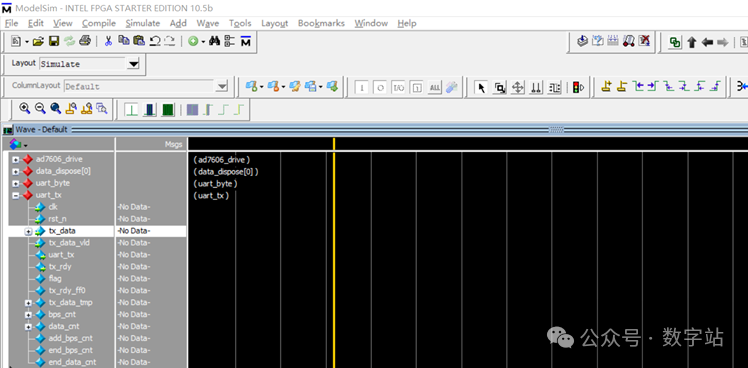
圖3 波形界面之后重新開(kāi)始仿真,點(diǎn)擊run -all即可,仿真文件運(yùn)行到$stop位置自動(dòng)停止仿真。 由于TestBench給ad7606八個(gè)通道賦值相同數(shù)據(jù),因此最終采集的數(shù)據(jù)如下圖所示。

圖4 八個(gè)通道采集數(shù)據(jù)通道0的數(shù)據(jù)處理模塊如下圖所示,首先采集到的16位補(bǔ)碼數(shù)據(jù)為16’d4107,對(duì)應(yīng)原碼為15’d4107,然后計(jì)算對(duì)應(yīng)的模擬電壓((4107) / (2^15)) * 5V = 0.6266V = 626mv,最終將計(jì)算結(jié)果轉(zhuǎn)換為BCD碼,與下圖結(jié)果完全一致。
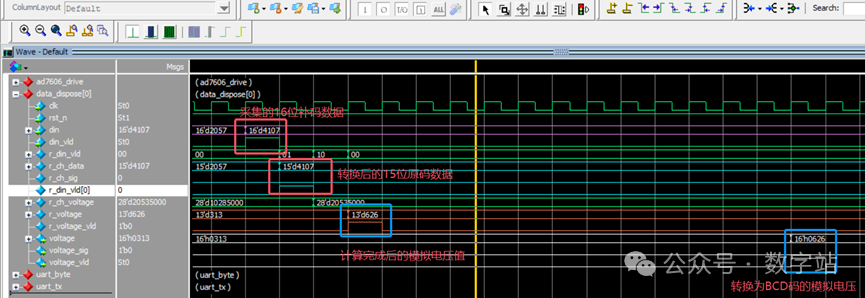

圖5 數(shù)據(jù)處理模塊仿真而uart_byte模塊把八個(gè)通道計(jì)算結(jié)果根據(jù)含義保存到對(duì)應(yīng)存儲(chǔ)器中,同時(shí)根據(jù)計(jì)數(shù)器的值向下游模塊傳輸數(shù)據(jù)。下圖所示,每當(dāng)上游模塊完成一次數(shù)據(jù)轉(zhuǎn)換,均會(huì)將存儲(chǔ)器的數(shù)據(jù)刷新。

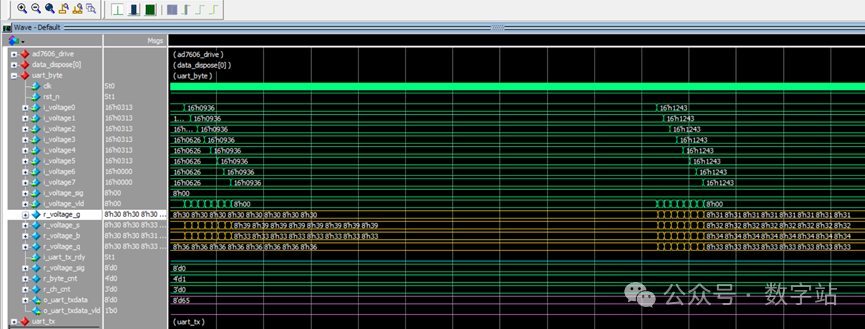
圖6 存儲(chǔ)數(shù)據(jù)傳輸數(shù)據(jù)相關(guān)的計(jì)數(shù)器如下所示,uart_tx_rdy為高電平表示uart發(fā)送模塊處于空閑狀態(tài)。為了防止uart接收端反應(yīng)不過(guò)來(lái),這里會(huì)讓空閑狀態(tài)多持續(xù)一段時(shí)間,才開(kāi)始發(fā)送下字節(jié)數(shù)據(jù)。使用計(jì)數(shù)器rdy_cnt來(lái)計(jì)數(shù)這段時(shí)間。

圖7 數(shù)據(jù)傳輸時(shí)序上圖中ch_cnt用來(lái)表示當(dāng)前傳輸?shù)趲讉€(gè)通道的數(shù)據(jù),而byte_cnt用來(lái)計(jì)數(shù)當(dāng)前發(fā)送該通道第幾字節(jié)數(shù)據(jù)。上圖中表示傳輸通道0第0字節(jié)數(shù)據(jù)為8’d65,對(duì)應(yīng)字符A,然后發(fā)送第1字節(jié)數(shù)據(jù)8’d68對(duì)應(yīng)D,之后傳輸通道對(duì)應(yīng)數(shù)值,一般給用戶(hù)顯示都是從1開(kāi)始的,因此8’d49表示通道1。上述三個(gè)數(shù)據(jù)顯示結(jié)果為AD1,后續(xù)仿真類(lèi)似,不再贅述。最后就是uart發(fā)送模塊,如下圖所示,發(fā)送8’h41(與8’d65相等),先發(fā)送低位數(shù)據(jù),起始位會(huì)占用一位,結(jié)果正確。

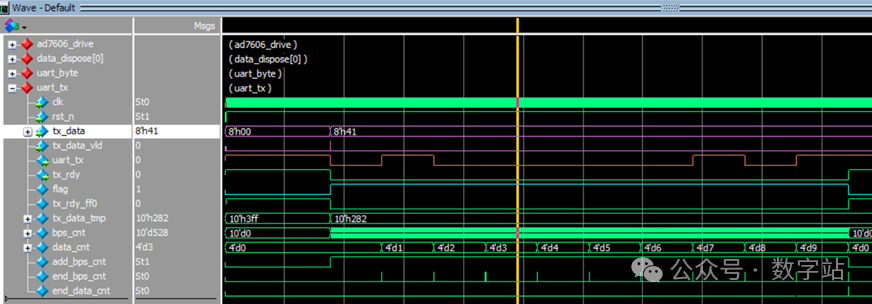
圖8 uart發(fā)送模塊仿真由于工程比較簡(jiǎn)單,因此仿真這塊做得都比較簡(jiǎn)潔,文末會(huì)提供工程,拿到后可以自行仿真。04上板實(shí)測(cè) 由于手里這塊板子的設(shè)計(jì)問(wèn)題,導(dǎo)致最終沒(méi)辦法上板,具體問(wèn)題如下所示。板子上有一個(gè)uart的公頭,如下所示。

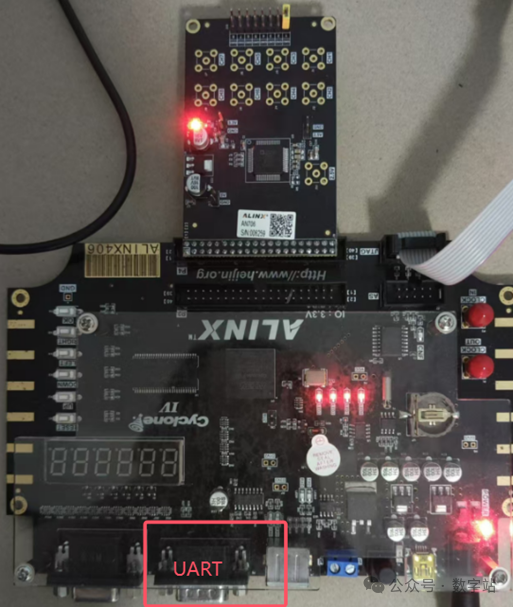
圖9 板載uart接口對(duì)應(yīng)原理圖如下所示,公頭的2腳接的是板子的uart發(fā)送引腳。
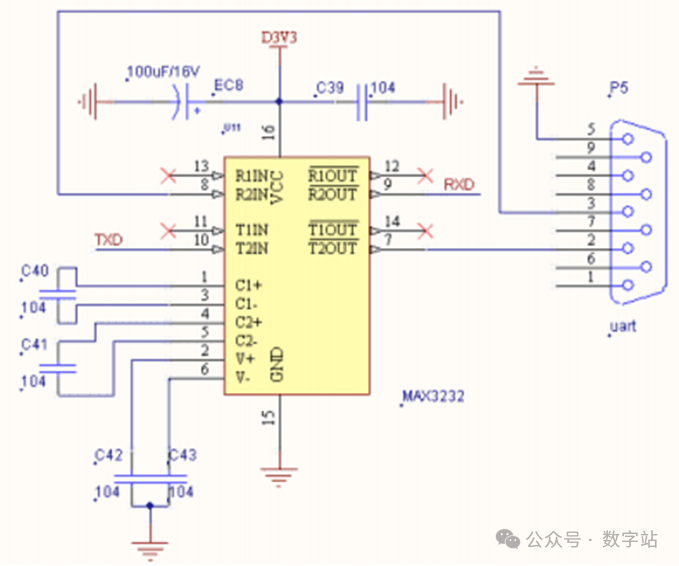
圖10 uart原理圖下圖是淘寶上該接口的線(xiàn)材接口信息,母頭線(xiàn)材2腳也是發(fā)送引腳?沒(méi)找到2腳用于接收的母頭線(xiàn)材,不知道設(shè)計(jì)這塊板子的工程師是如何想的,黑金自家也沒(méi)有賣(mài)這種線(xiàn)材。
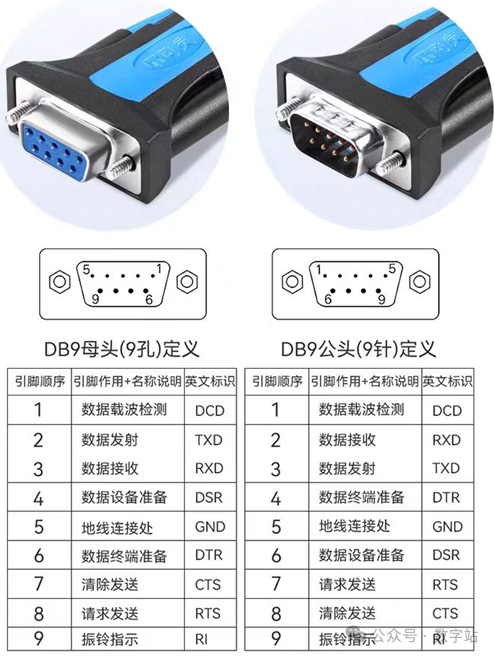

圖11 淘寶線(xiàn)材在網(wǎng)上找了一張功能類(lèi)似的截圖,上板后的結(jié)果應(yīng)該與下圖一致。
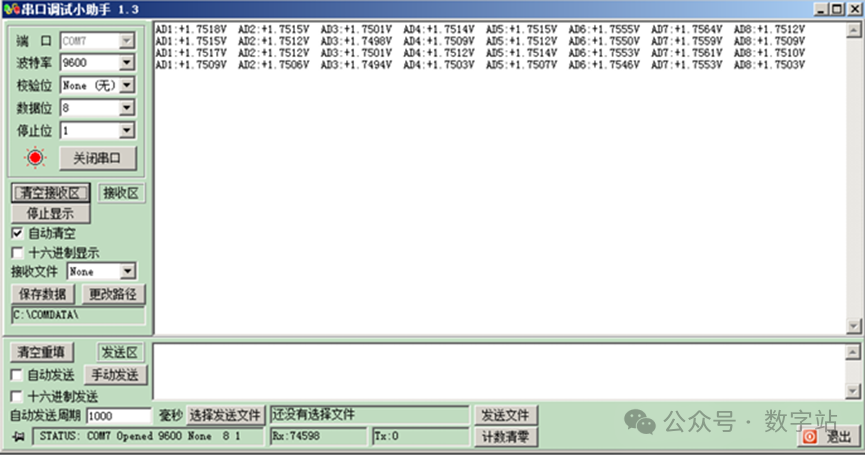
圖12 串口調(diào)試助手顯示雖然不能使用串口顯示數(shù)據(jù),但是也可以通過(guò)signal tap抓一下實(shí)測(cè)數(shù)據(jù),如果時(shí)序沒(méi)有問(wèn)題,依舊可以保證工程沒(méi)有問(wèn)題。如下圖所示,ad7606的八個(gè)通道全部懸空,然后下載程序到板子中。
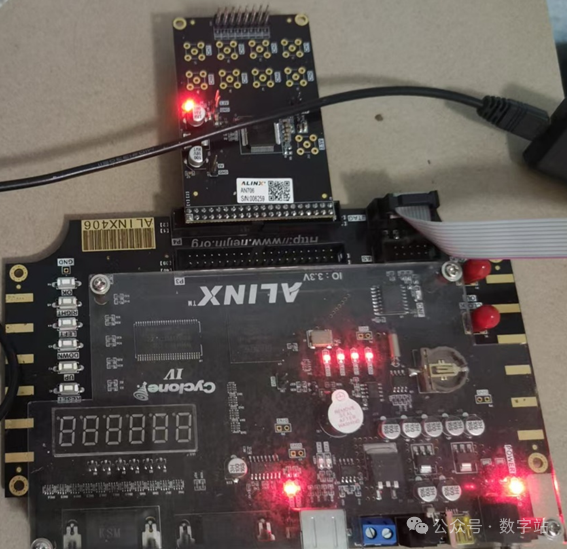
圖13 懸空ad7606八個(gè)通道輸入引腳使用signal tap抓取通道0的數(shù)據(jù),如下所示,對(duì)應(yīng)數(shù)據(jù)為16’d11857,轉(zhuǎn)換為模擬電壓為(16’d11857 / (2^15)) * 5V = 1.809V = 1809mv,與抓取的bcd碼轉(zhuǎn)換結(jié)果一致。


圖14 轉(zhuǎn)換時(shí)序由于uart每發(fā)送一個(gè)字節(jié)數(shù)據(jù)中間會(huì)間隔很長(zhǎng)時(shí)間,為了看到依次發(fā)送的數(shù)據(jù)對(duì)不對(duì),則需要抓取很多數(shù)據(jù),signal tap采用如下設(shè)置,只抓取o_uart_tx_vld為高電平的數(shù)據(jù),舍棄其余無(wú)用數(shù)據(jù)。


圖15 signal tap設(shè)置抓取數(shù)據(jù)如下所示,65對(duì)應(yīng)的字符A,54對(duì)應(yīng)的是通道6,由此可知第一幀數(shù)據(jù)為通道6的數(shù)據(jù),第二幀為通道7的數(shù)據(jù)。


圖16 抓取發(fā)送的uart幀數(shù)據(jù)與下圖譯碼器部分代碼對(duì)比,可以驗(yàn)證上圖的正確性。

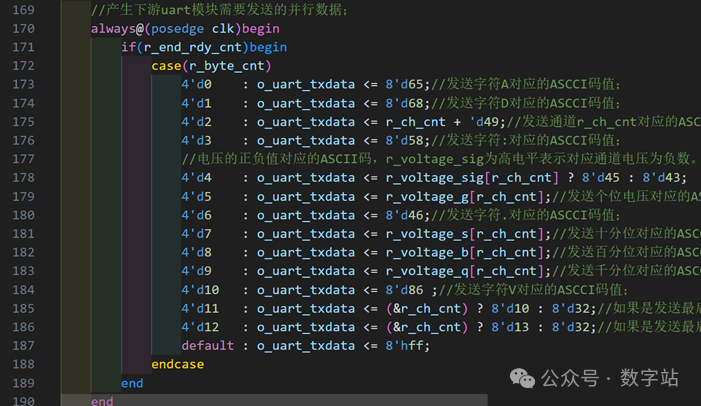
圖17 對(duì)應(yīng)譯碼最后修改signal tap抓取uart發(fā)送模塊時(shí)序,如下圖所示,發(fā)送數(shù)據(jù)為8’h2e,先發(fā)送低位數(shù)據(jù)。

圖18 抓取uart發(fā)送模塊時(shí)序相關(guān)時(shí)序驗(yàn)證結(jié)束,整體時(shí)序是沒(méi)有問(wèn)題的,如果換個(gè)正常的uart硬件接口可以直接使用。
-
adc
+關(guān)注
關(guān)注
99文章
6638瀏覽量
548247 -
串口
+關(guān)注
關(guān)注
14文章
1583瀏覽量
78636 -
上位機(jī)
+關(guān)注
關(guān)注
27文章
960瀏覽量
55585
原文標(biāo)題:fpga通過(guò)uart向上位機(jī)傳輸ad7606采集數(shù)據(jù)
文章出處:【微信號(hào):HXSLH1010101010,微信公眾號(hào):FPGA技術(shù)江湖】歡迎添加關(guān)注!文章轉(zhuǎn)載請(qǐng)注明出處。
發(fā)布評(píng)論請(qǐng)先 登錄
基于zigbee網(wǎng)絡(luò)的數(shù)據(jù)采集與上位機(jī)系統(tǒng)
【OK210申請(qǐng)】無(wú)線(xiàn)數(shù)據(jù)傳輸模塊設(shè)計(jì)
【CANNON申請(qǐng)】?jī)蓧K板之間藍(lán)牙數(shù)據(jù)傳輸
ADC信號(hào)采集與串口傳輸的疑問(wèn)
請(qǐng)問(wèn)怎么將SD卡中存儲(chǔ)的數(shù)據(jù)通過(guò)GPRS傳輸到電腦上顯示?
請(qǐng)問(wèn)ov2640采集單張照片怎么通過(guò)wifi傳輸給上位機(jī)?
無(wú)線(xiàn)數(shù)據(jù)傳輸模塊的實(shí)際應(yīng)用
串口線(xiàn)采集數(shù)據(jù),波形圖表顯示怎么操作?
stm32的幾種數(shù)據(jù)傳輸總結(jié)
如何利用單片機(jī)和上位機(jī)進(jìn)行大量的數(shù)據(jù)傳輸呢
數(shù)據(jù)傳輸速率是什么意思
基于單片機(jī)89c51的浮點(diǎn)型數(shù)據(jù)及串口通信整型的處理和發(fā)送

如何在單片機(jī)串口中發(fā)送超過(guò)8位的數(shù)據(jù)

高速數(shù)據(jù)傳輸藍(lán)牙雙模方案






 如何通過(guò)串口將8路adc采集的數(shù)據(jù)傳輸給上位機(jī)顯示
如何通過(guò)串口將8路adc采集的數(shù)據(jù)傳輸給上位機(jī)顯示










評(píng)論